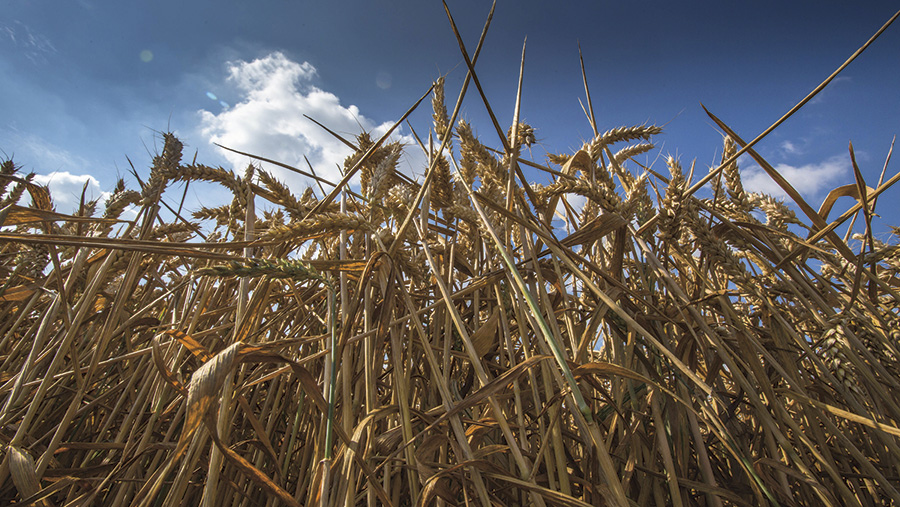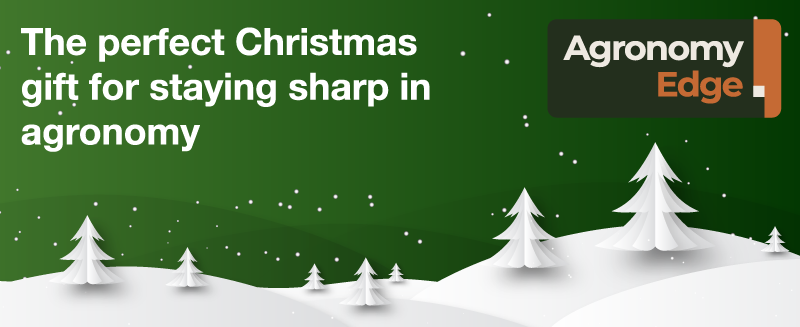New varieties offer fresh biscuit wheat opportunity
 © Tim Scrivener
© Tim Scrivener The Group 3 wheat sector has declined massively in the past decade and the new high-yielding varieties have plenty to do if they are they’re going to make an impact and revive this overlooked sector.
From a healthy market share of 31% in 2007, the Group 3s took just 7% of the total wheat market last year.
Having lost ground when grain prices were high, they have struggled to make any headway ever since, with several varieties falling by the wayside.
See also: Septoria resistance now biggest factor in wheat choice
Only the old favourites, Claire and Scout, have continued to hold their own and maintain some market share, despite their ever-widening yield penalty.
Miller support has been an essential component of this success, and it continues to have a bearing on variety choice and their commercial results.
New varieties
But could things all be about to change? Three new Group 3 varieties have been recommended – with two of them offering high yields, multimarket potential and better premium-earning opportunities than ever before, claims their breeder KWS.
This combination of high performance and marketing flexibility is important in the current climate, says Andrew Newby, UK managing director of KWS.
This is especially given the surplus of feed wheat that the UK produced last year and has been struggling to sell in a competitive market ever since.
“This is the first year that Group 3 varieties can match the yield performance of Group 4s, but also bring multi-market possibilities, he points out.
“It could be the missing piece of the jigsaw.
“There’s also a real danger that we will be short of biscuit-type wheat this year. So there’s an opportunity for growers with these varieties.”
That’s a view that Richard Plant of United Biscuits shares, who describes the national decline in Group 3 soft wheats as a risk to a business with recognised consumer biscuit brands.
“We buy 270,000t of UK wheat every year,” he explains.
“Of that, at least three-quarters of it has to be Group 3s, in order to suit our manufacturing processes. So these wheats are critical to what we do.”
As a result, United Biscuits is now going back to farm agreements with three partners to help secure supplies, he reveals.
“There’s been real progress in some areas, most notably the North, where there’s been an increase in plantings. We would now like to see that extend to other areas of the country.”
Export and distilling
According to Bill Handley of the AHDB’s Recommended List team, the soft endosperm wheats have an established outlet in biscuit, cake and other flours, but many of them also go for export and for distilling.
“This means some of them have a following in the North, where the distilling market is based, but others are grown where there is access to ports, such as the South East.
So there is UK-wide demand for these types.”
The new varieties – Barrel and Basset from KWS, and Spyder from Senova, are improvements, he points out, although there is still uncertainty about Spyder’s yellow rust score, given the arrival of new races of the disease.
“We will know more about this later this year. There are a number of varieties which might be more susceptible to yellow rust than their ratings suggest – across all the Nabim sectors.”
A highlight for the coming season is the fact that Barrel has the highest yield level of all of the soft wheats, including the soft Group 4s, he says.
“So that puts a different slant on things. If you’re looking for a barn filler, there are more on offer than before – some of which can be sold into other markets.”
Certainly, a wheat variety shift is taking place at the farm level, acknowledges AHDB’s lead market analyst Jack Watts, who notes growers have woken up to the fact a big heap of quality grain holds more marketing potential than the same amount of feed wheat.
“The UK has to be able to respond to the wheat market needs.
And that’s much easier to do with Group 1s, 2s and 3s, than it is with a big heap of feed wheat – as demonstrated by the current sluggish exports situation.
At the moment, we have too much of our wheat surplus made up of feed varieties.”
At a glance: New Group 3 wheats
- KWS Barrel – with a yield of 105%, Barrel tops the Group 3 category and has shown very high yields in the North. Suitable for the biscuit and export markets, it is being retested for distilling this year. Short and stiff, with orange wheat blossom midge resistance (OWBM), it also has an 8 for yellow rust, 7 for brown rust and 5 for septoria.
- KWS Basset – brings a UK yield of 103% and suitability for the biscuit and export markets. Similar to Barrel, it is also short and stiff with OWBM resistance, with a 9 for yellow rust.
- Spyder – recommended for the East and West regions, with a treated yield of 101% and a very high untreated yield of 91%. Suitable for the biscuit market, it has good disease resistance and responds well to growth regulators.
- Waiting in the wings is Bletchley, the only candidate Group 3 variety this year, which looks to have suitability for all three markets – biscuit, export and distilling. Early maturing, with short stiff straw and OWBM resistance, it is being evaluated for a wide range of sowing dates.
Grower experience
Hertfordshire-based Cereals host Robert Law is pleased with his decision to stick to Group 3 wheats, given the likely shortfall in supply and his history of growing them successfully.
Having three local mills within 35 miles of the farm with a need for biscuit wheat has influenced his choice, he accepts, but the varieties have also been consistent and reliable, giving the desired quality every year.
Having grown Consort and Wizard for many years, he is now very pleased with the performance of Zulu.
“It was the best wheat on this farm last year. I’m reluctant to change varieties too quickly, so I will stick with it for now.”
What about Group 2s?
Another market sector which is attracting much more interest from growers is the Group 2 category.
Again, new varieties are bringing the possibility of high yields and premium-earning opportunities, allowing growers to make the most of wider market potential.
Newly recommended for this year is Siskin; a very high-yielding wheat (105%) which meets export requirements and has a septoria rating of 7, with very good untreated yields.
“Siskin is a low risk variety in this market,” summarises Simon Oxley of the AHDB. “It has a high Hagberg and specific weight, and appears to be most suited for use in blends.”
It is one of only two varieties on the Recommended List with a 7 for septoria, which should give it immediate favour with growers, he adds.
“It also has good scores for the rusts and mildew, so has more on offer for those concerned about their fungicide bill.”
Last year’s addition, Lili, also has the high yields more normally associated with feed wheats, but with far greater market appeal.
Suitable for export, Lili has high Hagbergs but a lower grain protein, making it important to pay close attention to nitrogen management where a milling specification is required.
“It’s done better on lighter soils and as a first wheat,” reports Dr Oxley.
“It is later maturing than Siskin, which may need to be taken into consideration.”
Coming along behind these is Cassidy, a Panorama/Crusoe cross, which is up for recommendation later this year.
Another very high-yielding type with export potential, Cassidy has short stiff straw and mid-early maturity, similar to Crusoe.
It also has a good all-round disease resistance profile and appears to be suitable for late sowing.
Grower experience
The manager at AHDB’s Leicester Monitor Farm, Jack Smith, is growing Lili this year, but unlike many others with it in the ground, he isn’t aiming for a premium.
The variety’s high yield potential and good disease resistance are his reasons for choosing it, having been able to see how it performs on an Agrovista trials site, which is handily located on the estate he runs.
“We’re growing it as a barn filler,” he says. “We just don’t have enough segregated storage on the farm to keep everything separately.”
Mr Smith points out it was the second highest-yielding variety in the trials, and that it is a clean variety.
“I can miss a spray day and still get good results. Increasingly, we are selecting varieties on their disease resistance rating.
Farmplan software

GateKeeper crop management software is designed to help growers with precision farming, data management, record keeping and traceability. Find out more.

